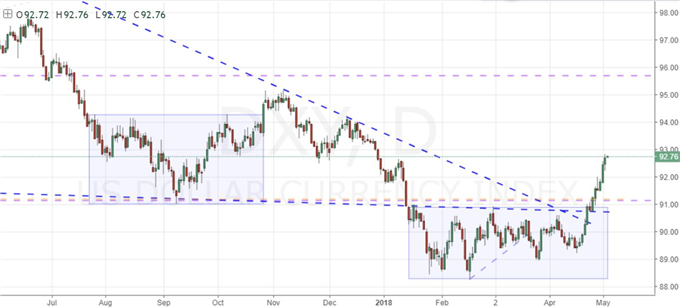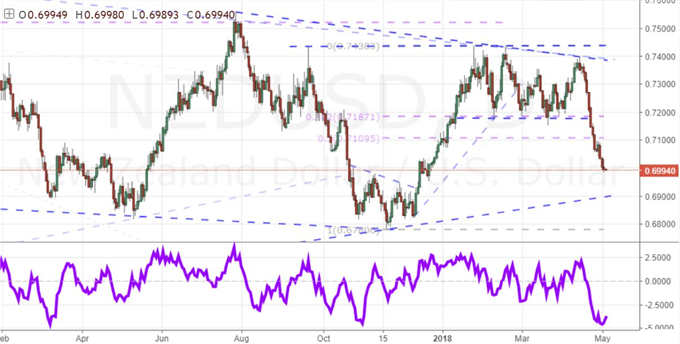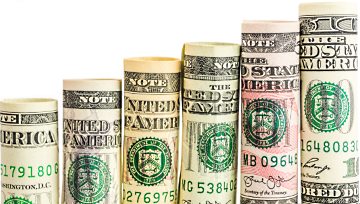Talking Points:
- We do analysis - technicals, fundamentals, conditional - to come to a level of confidence in a possible market outcome
- Fully evaluating the 'alternative' scenario can deepen conviction, better establish timing and prepare us for the unexpected
- My bias on the Dollar is bullish with a preference for EUR/USD and GBP/USD, but an unexpected drop suits NZD/USD and USD/CHF
What makes for a 'great' trader? Strategy is important but there are many ways we can analyze to good trades. The most important limitations and advances are found in our own psychology. Download the DailyFX Building Confidence in Trading and Traits of Successful Traders guides to learn how to set your course from the beginning.
No Trade is Certain so No Trade Plan Should be Without Plan B
If you are 'certain' that a trade is going to work out, you are deluding yourself. There is no absolutes when it comes to the markets, only probability. When we think in terms of potential, we evaluate a market and our approach far more thoroughly. That includes assessing what can lead to alternative outcomes. In some cases, there are markets that offer appealing trade opportunities whether the ultimate bearing is bullish or bearish. These ambidextrous markets are rare; but if we came across such a situation, it would make sense to spend as much time working out a trading opportunity to exploit an upside move as one that benefits a decline. More often, the probabilities are not so evenly split. Further, it is not always the case that the alternative to a preferred outcome supports a straightforward trade opportunity. The Euro and equities are good examples of this. If the Euro retreats with a deflated rate forecast or shares collapse after years of stimulus leveraged gains, the well of potential would be deep. For the alternative, a rebound from currency or asset class would struggle against an already stretched valuation. Certainly a possibility, but not one with the same potential for traders.
Thinking About the Alternatives Deepens Our Understanding
Even if you don't intend to consider an alternative outcome with the degree of intent as your primary market view, it can still deepen your overall appreciation of the market you are navigating. When you thoroughly vet the alternate outcomes for a market or setup, the full scope of how and why your favored trade may not work out becomes clear. If you didn't believe it probable/possible a market will decline for example, you may miss a wealth of contradictory evidence to your prevailing - but thoroughly under-vetted - market thesis that would otherwise give you reason for pause. Furthermore, when you appreciate both sides of a market, you can better establish when to enter. Rather than acting on a technical break, a full accounting of the elements that can work against a trade from gaining serious traction can create a better checklist for qualifying entry. And, perhaps the most valuable by-product of evaluating the alternatives is preparation for a trade should it be warranted. Many traders scramble to place a trade when the market moves in the opposite direction as anticipated with limited analysis as speed is a priority in fast moving markets. There may not always be viable trades for different outcomes, but it is good to have them ready when available.
My Bullish View of the Dollar and its Counter Case
To put this concept into practice, I think it is worthwhile to consider the US Dollar. From my analysis, I consider its greatest potential carrying out a bullish recovery. That is predicated on a technical observation that 2017 drove the currency into a significant retracement for which the fundamentals don't offer strong support. Considerations of growth, monetary policy, real yield and even political risk don't project the degree of weakness the Greenback's slide has suffered. Yet, a recovery requires some recognizable catalysts to spark recognition of the distorted positioning behind the currency. The recent collective retreat in monetary policy anticipation for the ECB, BoJ and BoE is that effective lever. The best options to pit a nascent strength for USD against are the fundamentally (bullishly) stretched Euro and Pound. On the other hand, the Dollar could readily falter after its recent multi-week charge should concentrated political risks flare up. In such a scenario, the retreat would most likely center on the intensity of the buildup and subsequent retreat. There have been remarkably strong moves against counterparts for NZD/USD, AUD/USD and USD/CHF. We discuss the value of fully analyzing probabilities through alternative trade scenarios in today's Quick Take Strategy Video.
US Dollar Index

NZD/USD

To receive John’s analysis directly via email, please SIGN UP HERE.





